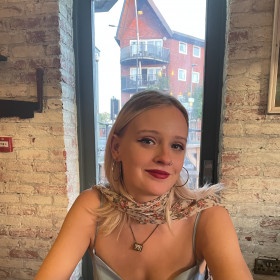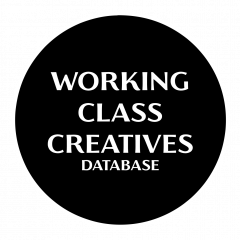Accessibility for working-class artists is a major issue. There is little support out there, particularly financially, meaning artists are struggling to produce or have their work show. Coupled with the art world existing as an elitist system, this results in an absence of working-class voices, and ensures class inequality in the art world.
It is shocking that so little is being done to aid working-class artists, and we are at risk of losing talented creators and valuable perspectives due to these class barriers. Today the art world mirrors the tastes of an elite group of people, with opportunities passed down to the same people generation after generation.
However, the Working Class Creative Database works to create a space where these artists can showcase their work, without worrying about finances or cultural barriers. On their website they state their database is:
“A space for conversation, connections, and sharing of opportunities, skills, and knowledge. This database is about creating a community amongst working-class artists and encouraging greater representation of the working-class experience within the arts.”
The opportunities this team provides is crucial for working-class artists to be able to develop and express their talents in a comfortable and supportive environment. Meeting other members allows them to discuss similar experiences and create connections within an artistic community that represents them, rather than trying to make the impossible leap into the elite world.
I had the pleasure of speaking to their founder Seren Metcalfe, who went into further detail about the collective and issues of accessibility.
Beginnings
Seren moved to London in 2016 to undertake a BA in Fine Art at the Slade. She realised she was one of the few working-class students there, and describes feeling imposter-syndrome. Most other students went to private school or had connections to the art world and galleries, and understood references she didn’t. Everything was purposefully inaccessible, the barriers not just financial but also cultural.
“It took me a while to see this as a class thing and it wasn’t until I met other working class creatives that I realised it wasn’t me it was the system that I was in.”
Out of a necessity to find a working-class community, Seren created the Working Class Creatives Database in her final years at the Slade. The database started as an Instagram page, when there “was a rise of working class voices on Instagram”. She further stated that she “wanted to create a space where we could talk about our experiences together and create a community”. Initially existing as a support network to share the work of these creatives, it eventually became more popular highlighting the need for a platform such as this. Seren built the website so artists could find them easier and become members themselves.
What the WCCD do
Since then, a core group of working-class creatives have assembled and volunteered to get the database up and running.
“We started to do Instagram Takeovers where our members could show their work to our followers for a week. We also introduced Recommendation posts and opportunity posts really focusing on sharing information and resources.”
They now also host a variety of meetings, events, and workshops for their members, as well as providing studio space and exhibition opportunities. Members can also be connected with industry professionals and supporters.
Class Inequality
The statistics on the amount of working-class people in the creative industry are frightening. In 2020, a report by the Creative Industries Policy and Evidence Centre found widespread and persistent class imbalances in creative industries. Those from privileged backgrounds dominate key creative roles in the sector, shaping what goes on stage, page and screen, meaning working class stories are not being represented. Those from working-class backgrounds experience less autonomy and control over their work, and are less likely to have supervisory responsibility or to progress into managerial positions. The WCCD website states that ‘As of 2020, only 16% of the workforce in creative industries are from working-class backgrounds.’
Class interacts with other factors – such as gender, ethnicity, disability and skill levels – to create ‘double disadvantage. The WCCD further illuminates these issues by stating:
‘Working-class women are five times less likely to secure a creative job than men from privileged backgrounds.’
‘Only 2.7% of those who work in galleries and museums are from a BIPOC background.’
‘Working-class people with a disability are more than three times less likely to secure a creative job than privileged non disabled people.’
Thoughts from Members
The work of the database has aided a lot of members in different ways. Previous barriers, such as being able to afford to exhibit work, has become easier with the help of the WCCD. A quote from the website states "Since joining the database I've felt more able to build a network, and have already had the opportunity to exhibit my work on three separate occasions”.
Additionally, they also emphasise a support network that being part of the database provides. They explain “I am part of a community and I have found real solidarity and genuine connection through having this space to meet and talk to other working-class artists from all intersectionalities."
WCCD has ensured artists have a comfortable space to create their art, that also helps them develop their ideas in the way they want to. Another quote from their members describes the need “to be honest about who I am and where I come from and what matters to me. And WCCD gives me the peer support I need to express those things and feel proud, connected and valued.”
Future of the Database
Seren highlights a group of core members who have been volunteering due to their desire for change. However, they are beginning to struggle balancing working multiple day jobs in addition to running the database – especially as more members are beginning to join. This has meant the team have been unable to spend as much time as they would like supporting their members. She outlines how vital funding is for the database to be able to continue their work and fulfil their goals.
They have an aim to fund two part-time roles for a year so they can have the space and time to focus on getting the WCCD on its feet. The rest would go to freelance roles and running costs.
It is fantastic what the Working-Class Creatives Database has managed to achieve in such a short space of time, and their dedication to helping other artists is a vital service. However, it feels unjust that they must still work harder than upper-class artists, and suffer burnout in order to allow artwork within their community to be seen. This should not be their responsibility, rather those with more money and power. Until they take notice of class inequality in the art world we must support organisations such as the Working-Class Creatives Database.
To donate or share what they do click here:
https://www.justgiving.com/crowdfunding/workingclass-creativesdatabase








0 Comments